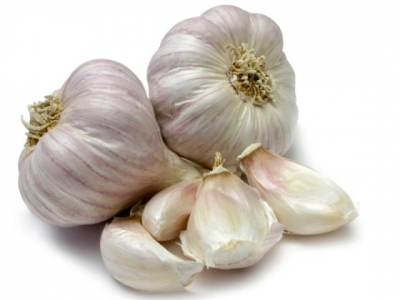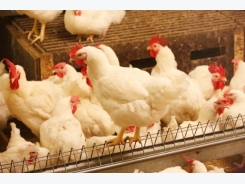Black cumin and garlic powder in poultry diets

The use of black cumin and garlic powder in poultry feed has received considerable attention in recent years, mainly because of their high nutritional and therapeutic values. What is their mode of action and their effect on poultry health and performance?
Black cumin (Nigella sativa L.) is widely grown in the Mediterranean region, and has long been used as a therapeutic and flavouring agent in human food, particularly bakery products. More recently, the herb has been introduced into poultry nutrition programs for therapeutic and nutritional purposes. The average proximate and mineral composition of black cumin seeds is shown in Table 1. These values however may vary depending on geographic distribution, time of harvest, and agronomic practices.
| Table 1 - Proximate and mineral composition of black cumin seeds. (Source: M.T.Sultan et al, 2009) | |
| Proximate composition (%) | |
| Moisture | 6.46 |
| Crude protein | 22.80 |
| Crude fat | 31.16 |
| Crude fiber | 6.03 |
| Ash | 4.20 |
| NFE | 29.36 |
| Minerals (mg/ 100 grams) | |
| Potassium | 808 |
| Calcium | 570 |
| Phosphorus | 543 |
| Magnesium | 265 |
| Sodium | 17.6 |
| Iron | 9.70 |
| Manganese | 8.53 |
| Zinc | 6.23 |
| Copper | 2.60 |
Black cumin seeds contain appreciable quantities of poly-unsaturated fatty acids representing 48-70% of their total oil content, with lesser proportions of mono-unsaturated fatty acids amounting to only 18-29%. Besides, the seeds contain considerable quantities of tocopherols and allied bioactive compounds such as phytosterols and thymoquinone which are important in enhancing the overall antioxidant capabilities of the body and act against various stresses, immune dysfunctions, and other complications.
Black cumin and broiler performance
One study showed that the addition of black cumin seeds to broiler diets at 10 grams/kg resulted in improved feed intake, body weight, and feed conversion at 42 days of age (Table 2). The enhanced feed intake is attributed to black cumin seeds’ improvement of the diet palatability and the resulting enhanced appetite of the bird. The higher body weight and feed efficiency observed with the black cumin diet could be attributed to the fact that the seeds serve as growth promoters and may be promising performance improvements, particularly feed efficiency, weight gain and immune system.
| Table 2 - Effects of black cumin seeds on broiler performance at 42 days of age. (Source: Z. Ismail, 2011) | ||
| Black cumin seeds (10 grams/kg) | Control | |
| Feed intake (g) | 4957.4 | 4784.6 |
| Body weight (g) | 2973.3 | 2827.7 |
| Feed conversion | 1.66 | 1.69 |
In addition, black cumin seeds have other pharmacologically positive effects on growth performance of broilers which may also be attributed to its content of volatile oil or essential oil. It has been shown that the essential oil has certain biological functions that could act not only as an antibacterial and antioxidant but also as a stimulant of digestive enzymes in the intestinal mucosa and pancreas that improve digestion of dietary nutrients and feed efficiency, subsequently increasing growth rate.
Effect on blood profile As indicated earlier, black cumin seeds contain a number of macro- and micro- minerals which are responsible for the formation of blood haemoglobin. The seeds also contain specific and non-specific factors contributing to the increased number of white blood cells, especially phagocytes and neutrophils, which play a part in the defence system of the bird and hence reduce mortality (Table 3).
| Table 3 - Effects of black cumin on blood characteristics and mortality of chickens (Source: I.H.Herms el at, 2011) | ||
| Black cumin seeds (1%) | Control | |
| Haemonglobin (g/dl) | 10.84 | 10.44 |
| WBCs (x10^3) | 28.67 | 25.00 |
| Mortality (%) | 22.50 | 37.50 |
Feeding of high dosages of powdered black cumin seeds to laying hens has been shown to decrease population of the harmful bacteria E.coli, probably due to its high content of crude acetone extract. Further, population of the beneficial bacteria Lactobacillus tend to increase with the feeding of black cumin, but this effect was not statistically significant (Figure 1). These results suggest that the use of black cumin seed could be an effective alternative to synthetic antibiotics for promotion of poultry health and performance. Besides it is environmentally safe and the costs for commercial feed formulation are low.

Garlic Powder
Garlic powder is another alternative feed additive, frequently used in the Mediterranean region. Garlic (Allium sativum) contains about 17% protein, 0.8% fat, 3% minerals, with varying amounts of vitamins (thiamine, riboflavin, and niacin) and enzymes (allinase, peroxidase, and myrosinase). In addition it contains about 0.2% volatile oils, which are particularly released when the plant is processed into powder, which are used for various therapeutic purposes. In most cases, however, chickens may need some time to adapt to the powder in their diet before any beneficial effects are exhibited. This is mainly because of the oil fraction present in garlic powder has a strong smell and unpleasant flavour.
Broiler performance and carcass traits
The effects of garlic powder supplementation on feed intake, body weight gain, and feed conversion ratio are shown in Table 4. Feed intake was reduced with garlic supplementation, probably due to the associated flavour factor, and the need of chickens to get adapted to the supplement during the first few weeks of feeding. However, the weight gain and feed conversion ratio were both better for the garlic-fed chickens, suggesting greater feed efficiency and utilisation.
| Table 4 - Effects of garlic powder supplementation (1%) on performance of broiler chickens from 0-42 days of age. (Source: M. Raeesi el at, 2011) | ||
| Garlic powder (1%) | Control | |
| Feed intake (g) | 4,247 | 4,401 |
| Body weight (g) | 2,368 | 2,289 |
| Feed conversion | 1.79 | 1.92 |
In most of the studies, no differences in carcass yield and quality have been reported for both the control and the garlic-fed chickens. Thus, the dressing percentage, the relative weights of thigh, drumstick, breast, and abdominal organs, and the moisture level of the carcasses were essentially the same for both groups. In many cases, however, the oxidative stability of refrigerated chicken meat was improved by supplementary garlic powder in the diet, suggesting a preservation action of the garlic over extended periods of time.
Effects on intestinal morphology
It has been shown that garlic constituents interact with the gut endocrine system, and are hence able to stimulate selective population of intestinal cells and cause enlargement of intestinal villi, particularly in the duodenum section, with a resulting increase of the absorptive capacity (Table 5). This mechanism could provide a clue for the improved weight gain of chickens despite the reduced intake of garlic-supplemented diets, as observed earlier. In other reports, it has been suggested that incorporation of garlic powder into poultry diets helps to reduce the turn-over rate and the number of sloughed cells in the intestinal epithelium, thereby saving large amounts of feed energy needed to perform this function and directing such energy to productive purposes. This could also be a factor contributing to the better feed efficiency observed with garlic-supplemented diets.
| Table 5 - Villi length and width of broiler chickens as affected by garlic powder supplementation. (Source: A.Y.Abdullah el at, 2011) | ||
| Garlic powder (1%) | Control | |
| Villi length (µm) | 991 | 1,613 |
| Villi width (µm) | 133 | 169 |
Egg production and quality
Hens fed on garlic for 1% of their diet produce 9% more eggs compared with those in the control group. They have also demonstrated an increase by 3.5, 0.6, 0.3, and 2.7 grams in egg weight, yolk weight, shell weight, and albumen weight respectively, regardless of the method of preparing the garlic supplement.
Studies on cholesterol levels in eggs have, on the other hand, revealed contradicting results. If processed in a powder form, the garlic should then be expected to lower the cholesterol level due to the release of allicin, being the most active component in garlic. In this case, allicin would alter the metabolism of egg yolk cholesterol by inhibiting the formation of mevalonic acid via HMG-CoA reductase. It could well be that with garlic preparations produced by heat or solvent processes the allicin may not be formed due to destruction of enzyme allinase which releases allicin from alliin. In that case the cholesterol level would consequently remain unchanged.
Nevertheless garlic plants are to a varying extent effective in improving feed efficiency and egg production, but the level mainly depends on the method of preparation.
Có thể bạn quan tâm
Phần mềm

Phối trộn thức ăn chăn nuôi

Pha dung dịch thủy canh

Định mức cho tôm ăn

Phối trộn phân bón NPK

Xác định tỷ lệ tôm sống

Chuyển đổi đơn vị phân bón

Xác định công suất sục khí

Chuyển đổi đơn vị tôm

Tính diện tích nhà kính

Tính thể tích ao hồ



 How to stop your hens from eating their…
How to stop your hens from eating their…  Strengthening broiler legs through nutrition and management
Strengthening broiler legs through nutrition and management